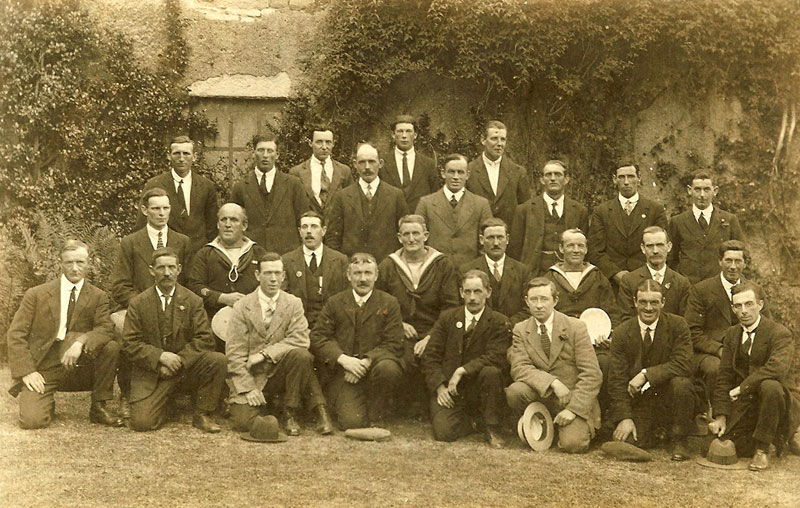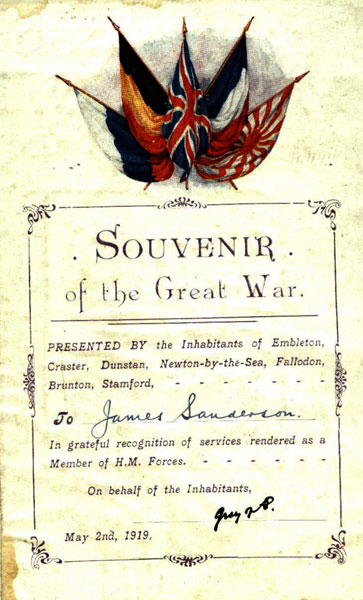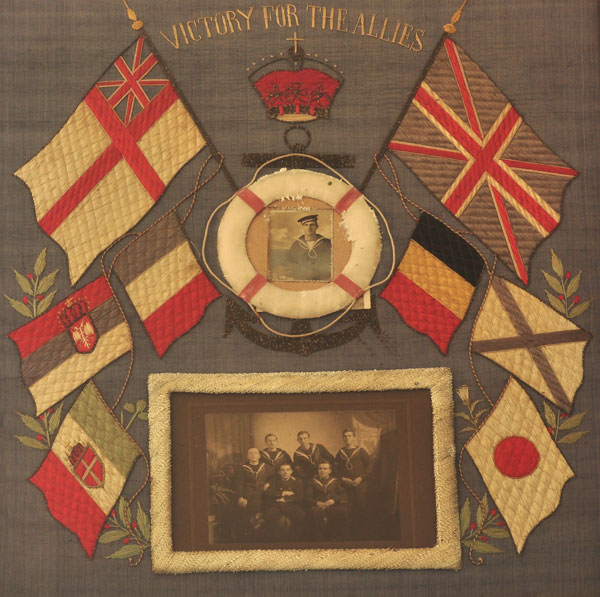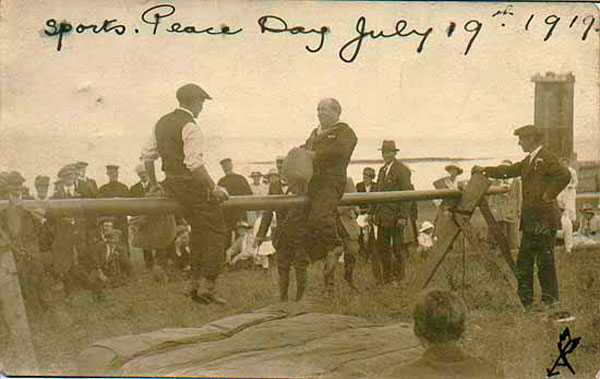 |
|
CRASTER WAR MEMORIALS World War Two About the Project |
The Great War, 1914 - 1918The memorial in St Peter the Fisherman church lists the following men who fought in the First World War:
This is not a complete list of those who fought in the war. Bill Seager, to name but one who is missing, was in the R.A.M.C during the war and he received both the British War Medal and the Victory Medal, but his name is not on the 'Roll'. There is also the mystery of the mark next to Jesse Budgen's name, a cross on a red background. Although we have made enquiries about this, we have discovered no explantion as to why he is singled out in this way. The following photograph came from Eva Archbold's collection and was made available by Jack Browell. It shows a group of men from Craster and district returned from the war, taken at a 'Welcome Home' party.
Very few of the men in this photograph have been identified, if you can help us name anyone, that would be very much appreciated. Service in the war was commemorated in other ways. The following is a bookplate from an Illustrated War Record presented to James Sanderson, Marion Gallon's grandfather, on his return from hostilities.
Families found their own way of celebrating and commemorating the end of the war. The following piece featuring a photograph in the centre of William Archbold R.N., Douglas Hogg's grandfather, is surrounded by beautiful embroidery.
The following photograph was collected in the 'We Can Mind the Time' project and shows the village celebrating 'Peace Day' on July 19th, 1919.
Although the armistice was signed on November 11th, 1918, the end of hostilities officially dates to the signing of the Treaty of Versailles on June 28th, 1919. 'Peace Day' was a national celebration of the end of the war that followed this event. The day was celebrated with a Victory Parade in London and local celebrations up and down the country. On the morning of the event, King George V sent a message to the wounded: “To these, the sick and wounded who cannot take part in the festival of victory, I send out greetings and bid them good cheer, assuring them that the wounds and scars so honourable in themselves, inspire in the hearts of their fellow countrymen the warmest feelings of gratitude and respect.” However, this was not a day of universal celebration as the following extract from Wikipedia about events in Luton, Bedfordshire, demonstrates: "On Peace Day, July 19, 1919,the Town Hall was burnt down during a riot by ex-servicemen unhappy with unemployment and other grievances.The riot started after members of the council arrived to read out the King’s proclamation and many in the crowd expressed their disapproval. Tension boiled over into violence and a number of protesters broke through the police line and forcibly entered the town hall. Shortly after a number of violent clashes took place, with the town hall being stormed by the crowd and eventually set on fire." The website Aftermath contains interesting information about the follow up to the war. |
Home Programme Membership Archive War Memorials History Walk Miscellanea Links Contact Us





